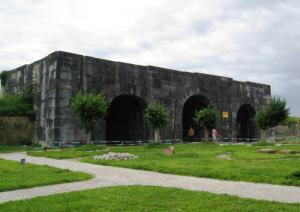Ho Citadel Becoming More Popular to Tourists

After the Ho Dynasty Citadel was recognized as a World Cultural Heritage site last year, visitors to Thanh Hoa have seen a promising climb with more tourists wanting to come and see the architectural wonder.
Figures show a total of 11,000 visits to the citadel on in the first six months of this year, a sharp increase compared to 2011 visits at 16,000.
Built in 1397 with an area of about 150 hectares, the stone structure is one of very few fortresses of its kind in the world. It has four arched gates facing north, south, east and west. Despite the passage of time, the four gates remained intact. Its priceless architecture value earned the site its recognition by UNESCO as the World Cultural Heritage on June 27, 2011.
Blocks of stone were used to build the walls of the citadel had an average dimension of 2.2m x 1.5m x 1.2m and weighed an average 20-25 tonnes. Some of them were 4.2m x 1.7m x 1.5m and 5.1m x 1m x 1.2m with the biggest weighing up to 26.7 tonnes. The larger blocks were laid under the smaller ones. This was seen as an achievement in construction engineering, using such large stone blocks that have never been found in other imperial cities. According to the UN organization, the citadel buildings "represent an outstanding example of a new style of Southeast Asian imperial city". Over time, the citadel has remained almost intact.
At a grand ceremony on June 16 of this year, the Ho Dynasty Citadel received a UNESCO certificate of World Cultural Heritage status.
The northern-central province of Tranh Hoa plans to conduct deeper research on the Ho Dynasty Citadel, while investing more in the management, preservation and development of the site. In fact, authorities have approved a restoration project of the citadel amounting to VND 22 billion. The project aims to develop the site to make it an attractive destination for domestic and foreign holiday-makers. Special tours to the citadel will also be launched to introduce heritage tourism potential in the province. The province hopes that the site will receive 35,000 visitors a year by 2015.









